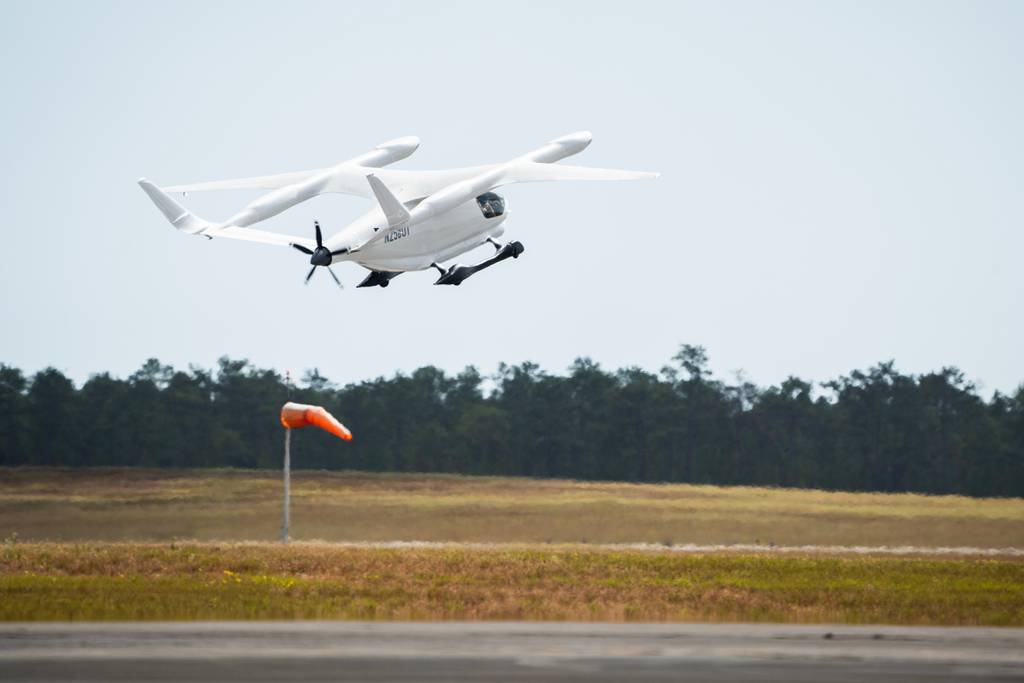
WASHINGTON — The U.S. Air Force’s three-month test of an electric aircraft at Duke Field in Florida wrapped up this month and included a simulated casualty evacuation exercise.
Beta Technologies said in a Monday release that its Alia aircraft took part in a casualty evacuation scenario with the 41st Rescue Squadron at Moody Air Force Base in Georgia this month. It was the first such simulated mission conducted with an electric aircraft, the company added, and served as a proof-of-concept exercise to show such an operation can work.
Beta Technologies is one of more than a dozen businesses with contracts under the Air Force’s Agility Prime program, which seeks to speed up industry’s work to create and field electric aircraft.
The Air Force is looking for ways it can fold electric aircraft into its fleet and has considered a variety of uses for them. This could include everything from rapidly moving cargo and passengers around a base to search and rescue missions in combat, given electric aircraft are quieter than traditional ones.
The Air Force’s first electric vertical-takeoff-and-landing aircraft, made by Joby Aviation, arrived at Edwards Air Force Base in California in late September. A month later, Beta’s Alia arrived at Duke Field, which is on Eglin Air Force Base, to begin a three-month experimental operations and training deployment with the 413th Flight Test Squadron and AFWERX, the Air Force’s innovation cell.
This Alia was a conventional takeoff-and-landing aircraft that operated more like a traditional fixed-wing plane.
Beta said this deployment, which fell under Agility Prime, was part of the Air Force’s larger developmental test and evaluation effort to gauge how well electric aircraft might work for the military’s missions. It also included a simulator used to train and practice emergency procedures.
The casualty evacuation mission at Moody included a simulated patient, ground forces, a simulated quick-reaction force, an Air Force HH-60W Jolly Green II helicopter, and the Alia aircraft, Beta said.
During the exercise, the HH-60 first transported the simulated casualty from a forward-operating base to a location in friendly territory. The Alia aircraft then transported the patient to a simulated established medical location that would be able to provide a higher level of care.
Beta said a C-130 would normally transport a patient in that scenario, requiring a crew of at least three and about $1,600 in fuel. The Alia required a crew of two and about $5 in electricity, the company said.
Also during its deployment, the Alia carried out a simulated maintenance support mission. The aircraft flew to Tyndall Air Force Base in Florida to pick up a spare part for an F-35, and then brought it back to Duke Field to repair the fighter.
Using the electric aircraft was faster and cheaper than driving a truck, Beta said, and could allow maintenance to take place on a jet more quickly.
The Air Force also experimented with using Alia for several other missions, including flight operations, maintenance support and infrared signature characterization, Beta said.
Beta finished building a high-speed charger at Duke Field before Alia’s arrival last October, which was the first electric aircraft charging station at a military installation.
Stephen Losey is the air warfare reporter for Defense News. He previously covered leadership and personnel issues at Air Force Times, and the Pentagon, special operations and air warfare at Military.com. He has traveled to the Middle East to cover U.S. Air Force operations.
- SEO Powered Content & PR Distribution. Get Amplified Today.
- PlatoData.Network Vertical Generative Ai. Empower Yourself. Access Here.
- PlatoAiStream. Web3 Intelligence. Knowledge Amplified. Access Here.
- PlatoESG. Carbon, CleanTech, Energy, Environment, Solar, Waste Management. Access Here.
- PlatoHealth. Biotech and Clinical Trials Intelligence. Access Here.
- Source: https://www.defensenews.com/air/2024/01/30/air-forces-electric-aircraft-test-ends-with-simulated-casualty-evac/



